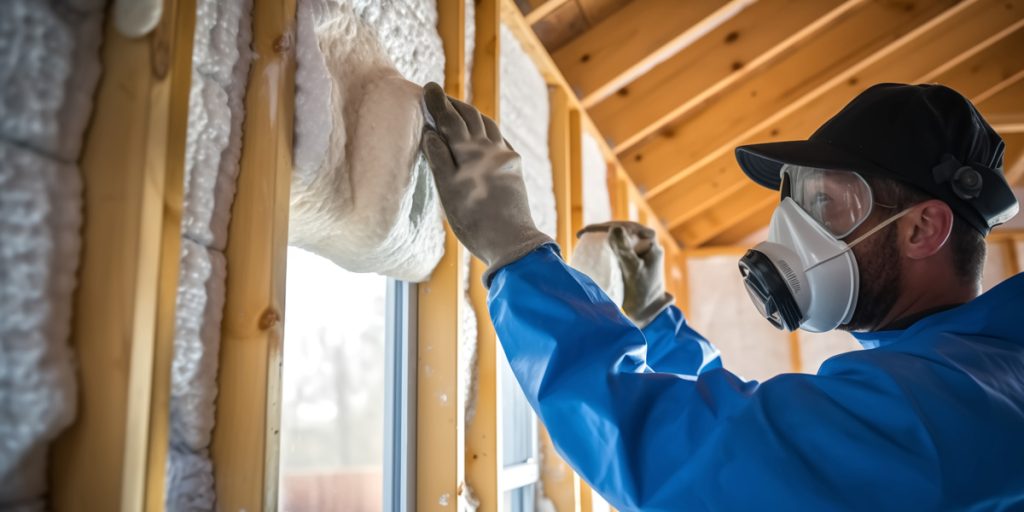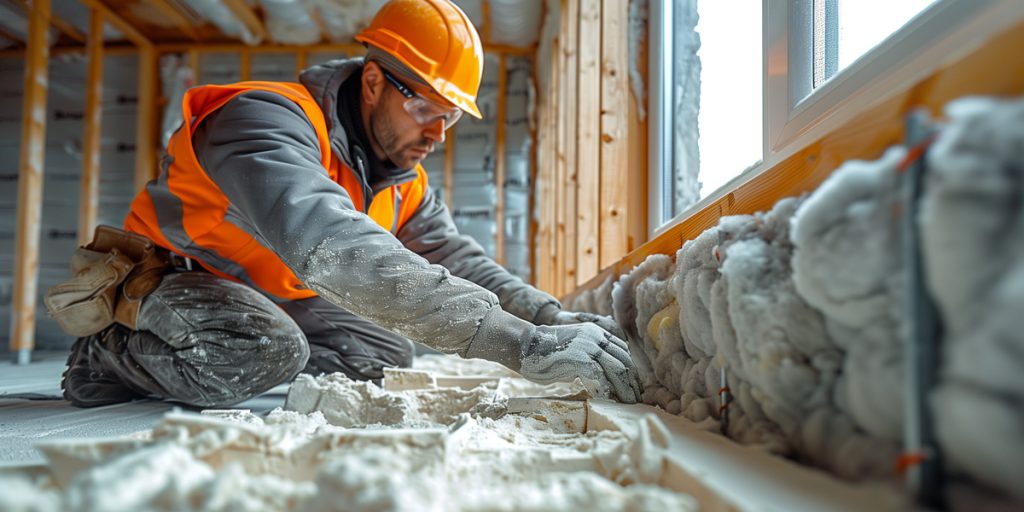Insulating your home effectively is crucial for maintaining comfort, reducing energy bills, and minimizing environmental impact. In the UK, where weather conditions vary widely throughout the year, choosing the right insulation type tailored to specific areas of your home can significantly enhance energy efficiency. This guide explores the various insulation options available, their unique characteristics, and considerations for homeowners looking to improve insulation in their properties.
1. Loft Insulation
Material: Loft insulation typically consists of mineral wool (fiberglass or rock wool), cellulose, or spray foam. Benefits:
- Reduces heat loss through the roof.
- Easy and quick to install.
- Cost-effective with relatively low upfront costs.
- Helps maintain consistent indoor temperatures.
- Improves energy efficiency by preventing heat from escaping in winter and reducing heat gain in summer.
Installation:
- Rolls or batts laid between joists or beams.
- Loose-fill insulation blown in using special equipment for older or difficult-to-access lofts.
- DIY-friendly for those with basic skills; professional installation ensures optimal coverage and effectiveness.
Considerations:
- Ensure proper ventilation to prevent moisture buildup.
- Check for gaps and compression over time, which can reduce effectiveness.
- Recommended depth varies by material and insulation type; aim for recommended R-values (thermal resistance) for optimal performance.
2. Cavity Wall Insulation
Material: Foam insulation, mineral wool, or polystyrene beads. Benefits:
- Improves thermal efficiency by filling the gap (cavity) between inner and outer walls.
- Reduces heat loss and lowers heating bills.
- Minimal disruption during installation for most homes, completed in a few hours.
- Enhances comfort by stabilizing indoor temperatures.
- Can lead to significant energy savings over time.
Installation:
- Requires professional installation due to specialized equipment and techniques.
- Small holes drilled into outer walls to inject insulation material.
- Insulation material fills the cavity entirely, ensuring complete coverage.
Considerations:
- Only suitable for homes with cavity walls; older homes with solid walls may require alternative insulation methods.
- Check suitability and ensure proper assessment before installation to avoid damp issues.
- Verify installer qualifications and obtain guarantees for workmanship and materials.
3. Solid Wall Insulation
Internal Insulation:
- Material: Rigid boards (e.g., expanded polystyrene), mineral wool, or reflective insulation.
- Benefits:
- Improves thermal performance of solid walls, typically found in older homes.
- Reduces heat loss and improves energy efficiency.
- Enhances interior comfort by maintaining stable temperatures.
- Preserves interior space compared to external insulation.
- Installation:
- Applied directly to inner surfaces of external walls.
- Requires internal redecoration post-installation.
- Suitable for homes with solid walls where external insulation is not feasible.
- Considerations:
- Potential reduction in room space; consider impact on room dimensions and aesthetics.
- Requires professional installation due to complexity and specific building regulations.
- Ensure proper sealing and insulation depth to maximize effectiveness.
External Insulation:
- Material: Insulated render systems, cladding, or insulated panels.
- Benefits:
- Enhances thermal efficiency without reducing internal living space.
- Improves exterior aesthetics and weather resistance.
- Minimizes thermal bridging and enhances overall building envelope.
- Can increase property value and market appeal.
- Installation:
- Applied to the exterior surface of solid walls.
- Requires planning permission and compliance with building regulations.
- Professional installation ensures proper fitting and sealing.
- Considerations:
- Costlier than internal insulation due to material and installation expenses.
- Requires careful planning and design to integrate with existing architectural features.
- Long-term benefits include improved energy efficiency and reduced maintenance costs.
4. Underfloor Insulation
Material: Rigid boards (e.g., extruded polystyrene), mineral wool, or spray foam. Benefits:
- Reduces heat loss through floors, particularly in older properties with suspended floors.
- Improves comfort by minimizing cold spots and drafts.
- Helps maintain stable indoor temperatures throughout the year.
- Enhances energy efficiency and reduces heating costs.
Installation:
- Installed beneath suspended floors or between floor joists.
- Professional installation recommended for best results.
- DIY options available for accessible areas with basic skills and tools.
Considerations:
- Access to underfloor voids and moisture resistance are critical considerations.
- Ensure compatibility with floor types and structural integrity.
- Verify installation meets building regulations and insulation standards for optimal performance.
5. Flat Roof Insulation
Material: PIR (Polyisocyanurate) boards, mineral wool, or spray foam. Benefits:
- Prevents heat loss through flat roof surfaces, commonly found in extensions or modern builds.
- Enhances thermal performance and energy efficiency.
- Improves internal comfort and reduces heating requirements.
- Can extend roof lifespan by protecting against temperature fluctuations.
Installation:
- Applied above or below the roof deck, depending on roof structure and design.
- Requires professional installation due to complexity and safety considerations.
- Ensures proper sealing and ventilation to prevent moisture buildup and maintain insulation effectiveness.
Considerations:
- Consider roof access and maintenance requirements post-insulation.
- Verify compatibility with existing roofing materials and construction.
- Choose materials with fire-retardant properties to meet building regulations and safety standards.
Conclusion
Selecting the right insulation for your UK home involves understanding the specific requirements of different areas, climate considerations, and budget constraints. Each type of insulation offers unique benefits and installation methods tailored to improve energy efficiency, reduce heating costs, and enhance indoor comfort. By prioritizing effective insulation solutions and professional installation, homeowners can create sustainable, energy-efficient homes that contribute to environmental conservation and long-term savings. Evaluate your home’s insulation needs, consult with professionals, and choose materials that best suit your property to maximize comfort and efficiency year-round.



